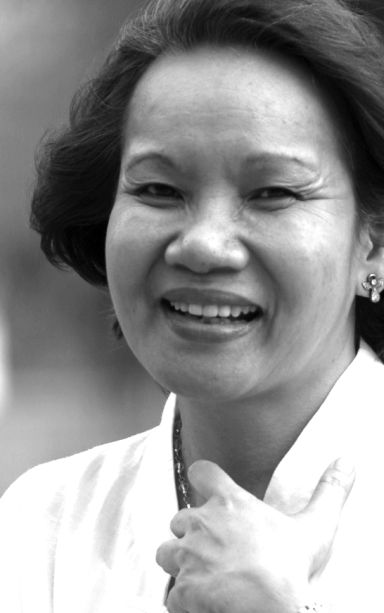
LOGARTA
Neneng Hermosa ended teacher training by letting the participants answer some questions: What characteristics do we want our students to have?
With these in mind what experiences, activities and materials will you prepare for them?
Because of these characteristics, what kind of a person should the educator be prepared to be? In Our Lady of Joy Learning Center, teachers do not have difficulty figuring this out because the vision and mission of the school is posted in each classroom and in other strategic areas in the school.
Now with the K to 12 curriculum, the Department of Education has provided curriculum guides for the subject areas and it is helpful to review these although we are not limited by these guides.
When I was younger and beginning to teach, it was a very exciting time, for it was what many called the second Propaganda Movement. It was a time of awakening which was actually initiated by the students and other youth who were demanding for social transformation.
They criticized their education as colonial and commercialized. They called for an education wherein students would grow to be nationalistic and have genuine concern for the country.
In “teach-ins” they encouraged their fellow students to be intensely aware of the quality of their education and the situation of the nation.
St. Theresa’s College sent my friend and me in the summer for a seminar to prepare us to teach Christian Living Education the following school year as among the early lay educators of this subject.
They described the new approach as “experiential” because it involved dealing with the reality of the student and her experiences.
We learned to guide the student in the process of integration in Christ. “That they all may be one as thou Father in Me.”
What really excited me was that nationalism was “a becoming one” and my being a history teacher and a Christian Living teacher became one. It provided my teaching a direction.
My adolescent Theresian students preferred me as a World History teacher because they were not comfortable with self-exploration which was the task at hand for the challenge of self-identity was what we were dealing with in Christian Living.
But when they asked me in history class who my favorite historical figure was, I was ready to respond with Jesus because I haven’t encountered anyone in history who had loved this much.
In UP Cebu, there were very many ways to encourage nationalism and there were many colleagues who accompanied me as I pursued this objective.
Neneng Hermosa motivated us to offer a culturally appropriate education.
The workbook for English prepared by Malu Doronila was all about the beautiful features of Muslim culture.
So no matter what I was teaching, students would have an encounter with some feature of their country and their locality.
In graduate school, students were encouraged to prepare culturally appropriate learning materials whether they were teaching Araling Panlipunan, English or Mathematics.
Collaboration was very effective among us.
Nene Yee-Montano had a very effective way of teaching critical thinking and nationalism as they read the Noli Me Tangere.
So did Madz de la Cerna, Gaying Rabago and Bong Ereno in Theatre Arts and fourth-year Filipino where students competed in presenting dramatically the history of the Philippines.
And these left their mark; in a student reunion, they recalled the Abakada and readily answered: Sino ang tutuloy sa laban ni Bonifacio?
We had also been exposed to the challenge of globalization. Graduate students who were mainly teachers were alerted to the dangers of homogenization, the tendency of being carried away by the culture of dominant countries to the neglect of local and national cultures.
So working on studies of indigenous culture and heritage research have been encouraged.
Exposure to advances in technology has been strong at the same time that students have been challenged to make maximum use of the technology to be educated and disseminate learning regarding our history and culture.
Since UP Cebu was the place of Sidlak-Region VII Gender Resource Center led by Dr. Rhodora Masilang Bucoy, it has been the starting point for promoting gender-fair, gender-sensitive education.
The integration of gender in the curriculum is very basic in human rights and justice education.
With an effective integration of gender in the curriculum, domestic peace will be promoted and various forms of violence within our society can be avoided.
Disclaimer: The comments uploaded on this site do not necessarily represent or reflect the views of management and owner of Cebudailynews. We reserve the right to exclude comments that we deem to be inconsistent with our editorial standards.
